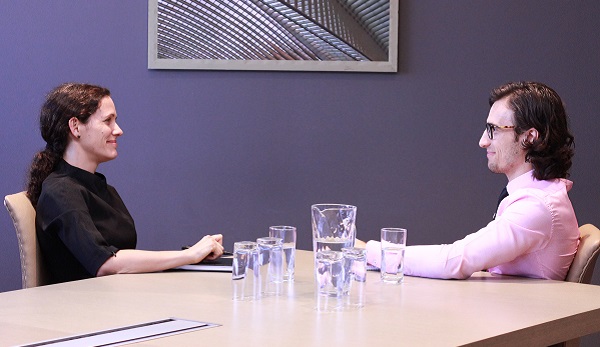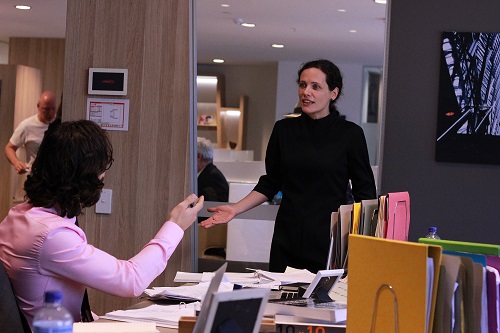Conflict Resolution 101: Focus on the Problem, Not the Person

Conflict Management Training for Employees
Conflict is a part of life. Whether you’re at home, at school, or at work...the people around you will not be exactly like you. And they aren’t always going to do things the way you would.
But that’s OKAY.
It is possible to work through conflict and use it to identify things that need to be improved or to strengthen relationships with others. You can utilize Conflict Management tips (like those we’ve included here) to move past the negative and help you find successful resolutions. We’ve focused this post on workplace conflict, but the instruction is applicable to all types of conflict.
Common Causes of Workplace Conflict
These days, it’s hard to find a workplace that isn’t under pressure to improve results. Everyone wants to do more...and do it better and faster. Do any of these conflict-inducing phenomena look familiar?
- Ineffective communication causes misunderstandings
- Different work styles create frustration for one or both parties
- Changing circumstances bring
- Confusion around who is doing what
- Confusion around task prioritization


These types of conflicts are happening everywhere. When it hits, it’s tempting for us to see the person with whom we’re in conflict as the “bad guy”, and to create a “You Against Me” scenario.
But if we stay in that mindset it’s unlikely that we’ll be able to positively resolve the problem. Besides, the other person is usually not the real problem. The real problem tends to be found somewhere in the mistake that has occurred, the work that didn’t get done, or even in the way we’ve reacted to something or someone.
"US Against the Problem" Instead of "You Against Me"
The key to getting out of an unproductive cycle of ignoring the real problem, assigning blame, and attacking the other person is to drop the “You Against Me” mindset and adopt an “Us Against the Problem” mindset. Here are some ways that can be done.
First, Stop the Personal Attacks
Changing your mindset comes down to reframing the thoughts you are having or the statements you are making about the other person. The goal is to move away from attacking the other person and instead suggest ways the two of you can identify and solve the real problem.
Here are some examples:
Personal Attack:
You are so inconsiderate! You never get your reports to me on time.
Reframed Statement reflecting a constructive attempt at problem solving:
Help me understand what is keeping you from getting your reports to me on time.
Personal Attack:
You’re always nitpicking and demanding everything in a rush!
Reframed statement reflecting a constructive attempt at problem solving:
Right now, there's a lot on my plate. It would be helpful if the two of us could agree upfront on project guidelines and delivery dates...
As you reach out with constructive attempts at problem solving, be sure to listen carefully to the other person’s perspective and be honest with them about how the problem is impacting you. This should bring a sense of calm to the situation so you can move on to finding solutions. However, If the other person keeps attacking you, say something like, “I'm just trying to find a solution here. Can we stop making this about you versus me and instead make it about us versus the problem?” If that doesn’t work, you may need to seek the help of a manager or someone else who can help mediate the conflict.
For more on how to see things from the other person’s perspective, see Media Partners’ Empathy Quadrant conflict tool.
Next, Work Together on Finding the Best Solution
Once the tension is diminished, try to work with the other person to find a WIN/WIN solution. Here’s what sets WIN/WIN solutions apart from the two other types (LOSE/LOSE and WIN/LOSE).
LOSE/LOSE
- Each person sticks to their intractable position.
- The “I’m right and you’re wrong” stance doesn’t change, and both people leave the meeting without a satisfactory outcome.
WIN/LOSE
- Results in only one person feeling that the outcome is positive.
- “Winner” feels good and “loser” feels imposed upon.
- Compromises ongoing relations between the parties and fails to take advantage of potential innovation and trust building.
Neither the LOSE/LOSE or the WIN/LOSE situations result in an optimal solution.
But, with WIN/WIN solutions:
- Both people feel they have won.
- Both people feel satisfied with the outcome and solution.
- Both people embrace the reality that the other person has won also.


Once you’ve found what seems to be a workable solution, be sure to check in with one another periodically to make sure it is working as planned. If adjustments need to be made, work them out together.
Conflict Management is a Life Skill
Because conflict can occur anywhere and at any time, conflict management is a skill everyone should have. In the workplace we are not opponents. We are all part of a team that is doing its best to get the work done and achieve organizational goals.
“Focus on the Problem, Not the Person” and “Find a WIN/WIN Solution” are two of the five steps in Media Partners’ Right/Wrong to WIN/WIN: Peer to Peer Conflict Resolution program. We encourage you to preview this program for use in your organization’s conflict management training efforts.

